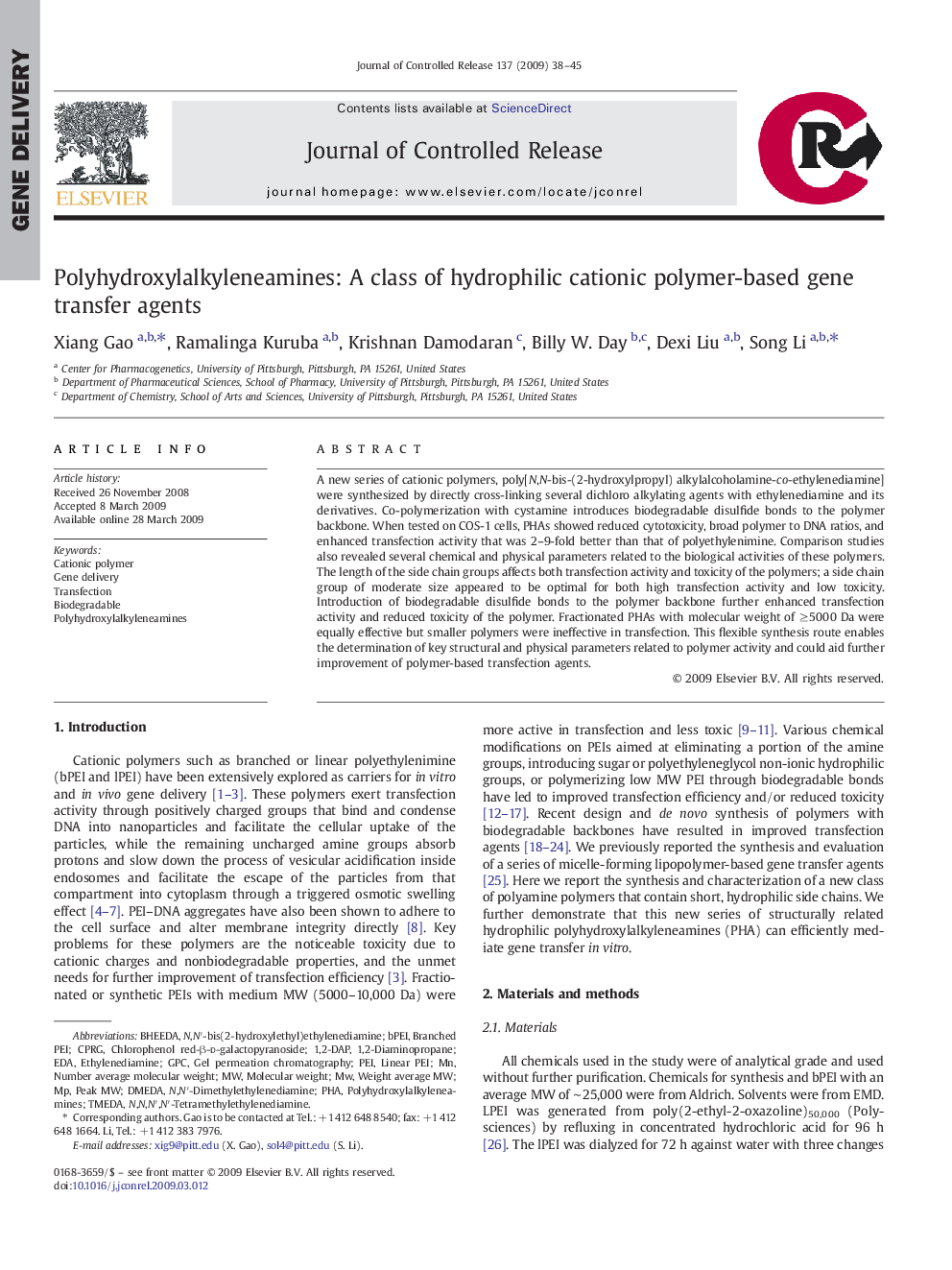| Article ID | Journal | Published Year | Pages | File Type |
|---|---|---|---|---|
| 1426144 | Journal of Controlled Release | 2009 | 8 Pages |
A new series of cationic polymers, poly[N,N-bis-(2-hydroxylpropyl) alkylalcoholamine-co-ethylenediamine] were synthesized by directly cross-linking several dichloro alkylating agents with ethylenediamine and its derivatives. Co-polymerization with cystamine introduces biodegradable disulfide bonds to the polymer backbone. When tested on COS-1 cells, PHAs showed reduced cytotoxicity, broad polymer to DNA ratios, and enhanced transfection activity that was 2–9-fold better than that of polyethylenimine. Comparison studies also revealed several chemical and physical parameters related to the biological activities of these polymers. The length of the side chain groups affects both transfection activity and toxicity of the polymers; a side chain group of moderate size appeared to be optimal for both high transfection activity and low toxicity. Introduction of biodegradable disulfide bonds to the polymer backbone further enhanced transfection activity and reduced toxicity of the polymer. Fractionated PHAs with molecular weight of ≥ 5000 Da were equally effective but smaller polymers were ineffective in transfection. This flexible synthesis route enables the determination of key structural and physical parameters related to polymer activity and could aid further improvement of polymer-based transfection agents.
Graphical abstractFigure optionsDownload full-size imageDownload as PowerPoint slide
